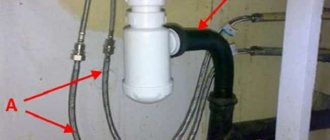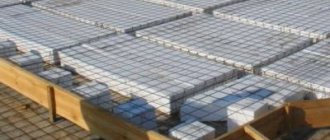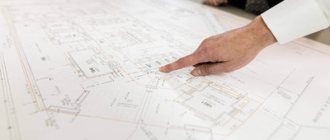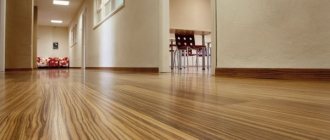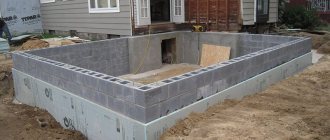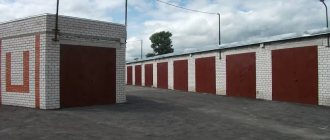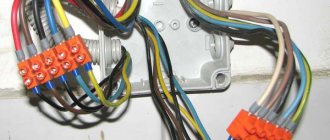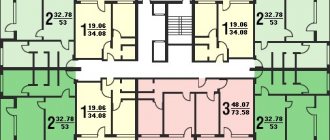We had 225 apartments of series 1-410 in our work!
Houses of the 1-410 series were built in the period 1954-1961. mainly in the capital and the Moscow region. The height of these gray, sand or red brick buildings without cladding ranges from two to five floors. Brick provides good heat and sound insulation. Construction was suspended due to the development of more comfortable panel buildings.
| Year of construction | 1954-1961 |
| Number of storeys | from 2 to 5 |
| House type | Brick |
| Wall material | External walls are brick. Usually the brick is silicate, there is also silicate clay, ordinary, 51-64 cm thick. The thickness of the internal walls is 51 cm, the material is brick. |
| Floor material | The floors are reinforced concrete hollow-core slabs 22 cm thick. |
| Facade material | There is usually no cladding. Colors: gray, red, sand. |
| Heating | Central, water |
What is L-410?
The L-410 Turbolet is a twin-propeller aircraft developed in the late 1960s by the Czechoslovakian Let Kunovice (now Czech Aircraft Industries). The airliner is designed for local airlines and is suitable for operation on unpaved, grass and snow fields, and at airfields with short runways. Commercial operation of the aircraft began in 1973.
The airliner is equipped with M601 and H80 engines from GE Aviation Czech (the former Czech engine manufacturer Walter, acquired in 2008 by the American company GE Aviation, a division of General Electric Corporation).
Since 1969, 1,104 different modifications have been built (most of all - L-410 UVP), 862 of them were delivered to the Soviet Union and were actively used to transport passengers and cargo on local airlines. In the 1990s, the demand for these aircraft and the rate of their production decreased by more than ten times.
By the beginning of 1992, there were about 750 L-410s left in the USSR. As of 2012, more than 400 aircraft were in service worldwide.
In 2008, 51% of the shares of Let Kunovice (Aircraft Industries) were bought by the Russian company Ural Mining and Metallurgical Company (UMMC). In 2013, UMMC acquired the remaining 49% of the company's shares. Since 2021, assembly of the L-410 in Russia has been carried out at the Ural Civil Aviation Plant in Yekaterinburg. On July 2, 2021, the plant produced several versions of the L-410 aircraft for operation in extreme conditions, including with skis for landing on snow in the Arctic.
The crash of the L-410 plane near Irkutsk. Main More details
Design features of the series and facade finishing
At the time of its construction, series 1-511 was considered the most expensive “Khrushchev” building in terms of cost, although the earliest houses in the series used low-quality brick - silicate. Later it was replaced with porous-perforated or seven-slot brick, the width of the masonry in the external walls reached 38-40 cm. The walls of the staircases, as well as the inter-apartment walls, were built from gypsum concrete and were thinner than the external ones (27-38 cm), and the interior walls the partitions were made of gypsum concrete panels (8 cm). Hollow-core reinforced concrete slabs were used as interfloor floors.
The roof in early versions of Building 1-511 was a hipped roof with a slate covering or a roofing iron covering. In later houses, the flat roof had a slight gable slope, and roll-type waterproofing was used as a covering.
Hot water supply in houses of the 1-511 series can be either centralized - from the city network, or local - with the installation of geysers. The “five-story buildings” of this series do not have elevators, a garbage chute was equipped only in some buildings, and the first floor is usually occupied by residential apartments. The advantage of this series is the thick external brick walls, which provided the living quarters with good heat and sound insulation.
What modifications of the aircraft are there?
The L-410 has several modifications:
- standard passenger version for 19 passengers (with the possibility of expanding the luggage compartment), there are front (for 100 kg of cargo) and rear (for 150 kg of cargo) luggage compartments accessible from the passenger cabin;
- sanitary option: the aircraft is equipped with six stretchers with fastening belts, there is a folding table and a seat for a doctor and two accompanying persons;
- emergency medical care: professional medical equipment is available, including an operating table, oxygen cylinders, lamps, etc., storage space for medical equipment, a seat for the doctor, medical personnel and accompanying person;
- cargo option: provides the ability to transport up to 1700 kg of cargo;
- parachute version: with folding seats and seat belts for 18 parachutists, wide, specially modified lifting doors, an external platform for the photographer and light signaling.
The most modern modification is L-410 NG (produced since 2018). The new product differs from the base model in improved flight and operational characteristics. The liner is capable of carrying up to 19 passengers or 2,300 kg of cargo over a distance of up to 2,750 km.
What is known about the crash of a plane with parachutists in the Kemerovo region? More details
Layout features
The house has from two to five sections. There are 6 apartments per floor with separate bathrooms and toilets. All apartments, and they are two-, three- and four-room, have natural ventilation. There are no one-room apartments in these buildings, and the area of the rest is 52, 80 and 100 square meters, respectively. m. The first floor is also predominantly occupied by residential premises.
The ceiling height is quite high - 2.8-3 m. Standard amenities are provided - water supply, sewerage, heating. The disadvantages are the lack of an elevator, a centralized garbage chute and small balconies, which, moreover, are not available in all apartments.
Would you like to know more details or have your own personal questions? call us +7 (495) 181-13-09 or request a call back
Chronology of L-410 crashes in Russia
From the end of 1991 to the present, at least seven crashes of aircraft of this type have occurred on the territory of the Russian Federation. The last L-410 crash in Russia to date occurred on June 19, 2021. The Russian DOSAAF Let L-410 Turbolet plane crashed near the Tanai airfield (Kemerovo). The aircraft was performing a training flight with paratroopers.
In total, at least 119 vehicles of this type were lost during operation, and over 480 people were killed in more than 100 accidents.
Deadlines for renovation of apartments in buildings of series 1-410
| Type of repair | 1 room apartment | 2 room apartment | 3 room apartment |
| Cosmetics | 30 – 35 days | 40 – 50 days | 50 days |
| Capital | 60 – 70 days | 90 - 100 days | 100 – 120 days |
| Elite | from 70 days | from 100 days | from 120 days |
| Designer | 90 - 100 days | from 120 days | from 140 days |
* The time frame for luxury apartment renovation depends on the selected materials, some of which must be delivered to order.
* Deadlines for design renovations - here we also add time for the production of the design itself and drawings for it (on average about 15–30 days).
Building structures series 1-513
The load-bearing walls are the external walls, as well as the transverse inter-apartment walls, the central longitudinal inter-apartment walls and the walls of the staircases.
The materials are traditional for brick five-story buildings of that period
- The external walls are made of sand-lime brick or a combination of sand-lime and clay bricks, and have a thickness of 51-64 cm.
- Internal load-bearing walls are brickwork 51 cm thick.
- The floors are reinforced concrete, made of hollow-core slabs 22 cm thick.
- Interior partitions were made from various materials - gypsum concrete and various lightweight blocks 8-10 cm thick.
Kitchens were originally equipped with two-burner gas stoves.
Description of the house
Among residential buildings of the Khrushchev period, series 1–464 is considered the most successful. You can distinguish the house of series 1–464 from other buildings of the Khrushchev period by the windows installed on the interfloor platforms. In appearance, they completely coincide with the 2-hung windows of residential apartments.
The building of series 1–464 is a residential building consisting of end and row sections. As a rule, the number of entrance sections is 4. This is the most used layout option. The number of floors of large-panel residential buildings is 5 floors. At first they built 3- and 4-story versions, but for direct benefit they settled on a 5-level version.
During the construction of buildings of the 1–464 series, a structural scheme with longitudinal and transverse load-bearing walls was used. External walls are single or three-layer reinforced concrete panels with a thickness of 210 to 350 mm, depending on the climatic conditions of the construction region. The width of reinforced concrete panels with small pitches is 2600 and 3200 mm. They can be painted or covered with a layer of gravel. The balconies are installed on slabs of greater width.
Solid reinforced concrete slabs with a thickness of 100 mm are used as interfloor ceilings. Partitions are made of reinforced concrete with a solid section and a width of at least 120 mm. The layout of the house provides for combined bathrooms.
The flat roof has a soft roof made of roofing felt based on bitumen mastic. Drainage is carried out through an external drainage system. There is no technical floor in the house of series 1–464. Ceiling height 2500 mm.
The vital functions of the building are ensured by centralized water supply, sewerage and heating systems. Electricity and gas supply is provided from citywide electric and gas networks.
Ventilation of the interior space occurs naturally due to windows and a ventilation duct, according to the layout, located in the wall between the kitchen and toilet.
You will be interested in: Characteristics of houses of the P-46 series: advantages and disadvantages
The combined bathroom is equipped with plumbing equipment, and the kitchen is equipped with a stove for cooking. An elevator and a garbage chute are not provided for by Project 1–464.
Multipurpose aircraft Let L-410. The first half century in operation
The first experimental aircraft L-410, 1969. Photo Airwar.ru
At the end of 2021, it will be 50 years since the Let L-410 light multi-role aircraft began regular operation on airlines. Over the past decades, equipment of this type has become widespread and has found its place in transportation in dozens of countries around the world. Moreover, after the restoration of production, the aircraft has a great future.
Within the framework of international cooperation
In the mid-sixties, in the USSR and other countries of the socialist camp, the need to create a new passenger aircraft took shape.
For use on local airlines, an aircraft that was inexpensive to manufacture and operate was required, capable of carrying up to 20 passengers or equivalent cargo over a distance of 500-600 km. Taking into account such needs, the Soviet State Research Institute of Civil Aviation conducted the necessary research and formed the terms of reference for a promising project. The development of the new aircraft according to the requirements of the State Scientific Research Institute of Civil Aviation was carried out by several Soviet design bureaus and the Czechoslovakian enterprise Let (Kunowice). The last one was in 1966-67. created a new project L-410 or Turbolet. Based on the results of a comparison of the presented projects, as well as taking into account cooperation within the framework of the Council for Mutual Economic Assistance (CMEA), the Czechoslovak project was accepted for further implementation.
Airplane with aerial cameras L-410FG. Photo Airwar.ru
Within a few years, he completed the design and built a prototype aircraft. The first flight of the new aircraft took place on April 16, 1969. Soon after this, a decision was made to prepare for mass production. It was assumed that the plant in Kunovice would produce up to 45-50 aircraft per year, which would eventually satisfy all the needs of the CMEA countries.
First episodes
In 1969, the Let plant began construction of five zero-series aircraft, and later the 1st series was launched.
Already at this stage, various innovations began to appear, as a result of which some of the 0 series aircraft and subsequent 1 series aircraft were classified as modifications of the L-410A. In 1971, equipment of this type began to be transferred to customers. The first to receive it was the Czechoslovak airline Slov-Air. By the end of the year, the new L-410A entered regular flights. Over the course of several years, only 31 “Turbolets” of modification “A” were built. These were mainly passenger cars with a 17-seat interior. Also built in limited quantities were the L-410AS with an improved interior, the L-410AB and L-410AG with a modified propeller group, and the L-410AF with a set of aerial cameras.
One of the L-410s of the Russian army, 2021. Photo by the Russian Ministry of Defense
In 1973, Leta built and tested a modernized aircraft with new Czech-designed M-601A engines. This version was designated L-410M and soon went into production. Production of this modification continued until the end of the seventies, when the next version entered the assembly line. During this time, several hundred aircraft were built - the “M” modification eventually became the second largest aircraft in terms of the total number of aircraft produced.
In our country, the first “Turbolets” appeared in 1973. Five L-410A vehicles from the previous year of production were tested and entered into service. Soon after, the USSR placed large orders for the next production modification, the L-410M. It was planned to purchase several hundred aircraft for the Ministry of Defense and the Ministry of Civil Aviation. 100 vehicles were purchased for civilian transport only.
"Short takeoff and landing"
In 1978-79 Czechoslovakian aircraft manufacturers have launched a new modification into the series - L-410UVP (“short take-off and landing”). An enlarged wing with new mechanization, improved tail surfaces and upgraded M-601B engines ensured improved takeoff and landing characteristics. The aircraft also received a set of avionics jointly developed by the Soviet-Czechoslovak Republic.
L-410UVP-E20 at the North Pole, 2015. Photo of the Russian Ministry of Defense
Since the early eighties, modified versions of the L-410UVP have been produced. Customers were given equipment with an improved interior, aerial photography aircraft, as well as a specialized transport modification. In 1984, the L-410UVP-E aircraft appeared with a new power plant based on the M-601E engines.
In the late eighties, the Let company developed a modification of the L-410UVP-E20 with improved flight characteristics and increased payload capacity. Subsequently, the aircraft was modernized using an imported General Electric H80-200 engine, which made it possible to enter the “large” international market.
The L-410UVP aircraft appeared at the right time and in a favorable environment. “Let” received large orders from the CMEA countries, and then was able to find customers from other countries. Production was brought to the level of 45-50 aircraft per year. As a result, the UVP version became the most popular in the history of the L-410 family.
Aircraft L-410UVP-E20. Photo Let/Aircraft Industries
Soviet aviation received its first L-410UVP in 1979-80. After passing the necessary checks and procedures, the vehicle was cleared for use in the army and civil aviation. Subsequently, it was the USSR that became the main customer of these aircraft.
Hard times
At the turn of the eighties and nineties, the Let plant found itself in a difficult situation.
Socialist countries ordered fewer and fewer aircraft, and some refused new purchases altogether. At the same time, the Czech company was able to find buyers in foreign countries. New L-410UVP later versions were sent to Asia, Africa and South America. Due to their low cost and high characteristics, “Turbolets” were able to effectively compete with foreign models in some markets. However, the needs and capabilities of new buyers were limited, and the total volume of the order portfolio was significantly reduced. In the worst years, the plant built no more than 5-10 aircraft. The maintenance of already built equipment and the supply of spare parts helped to survive in such conditions. However, this did not save the company from bankruptcy and several changes of ownership. Based on the results of these processes, it was transformed into Aircraft Industries, as.
Cabin L-410UVP-E20. Photo Let/Aircraft Industries
In 2008, the Russian Ural Mining and Metallurgical Company bought a 51% stake in Aircraft Industries. The new owner began to restore production and planned to reach a rate of 15-20 aircraft per year. These intentions were partially fulfilled. So, from 2009 to 2013. The plant was built approx. 60 aircraft. Then UMMC bought the remaining shares, increasing the stake to 100%.
New era
Since 2010, Aircraft Industries has been developing a deep modernization project for the L-410NG.
The airframe underwent serious processing and all key components and instruments were replaced, which led to an increase in all the main flight, technical and operational characteristics. In July 2015, the experimental L-410NG took to the air for the first time. In the spring of 2021, serial production began. The first production "NG" was transferred to a Russian customer a year later. It was also reported that there are orders from Poland and Kazakhstan. At the time of the series launch, there were orders for 16 vehicles. Subsequently, new contracts appeared, and production in Kunowice continues.
The latest modification is L-410NG. Photo Let/Aircraft Industries
In mid-2021, it was announced that the L-410 would also be produced in Russia. The Ural Civil Aviation Plant was chosen as the construction site. The first Russian-assembled aircraft were laid down at the beginning of 2021. By the end of the year, five aircraft were built and launched for testing. The plan for the next year included 18 more cars.
Production continues to this day and shows good results. The degree of localization has gradually increased and there is a solid portfolio of orders. So, this summer it was reported that the plant was already building its 50th aircraft. Customers for the new L-410 are mainly Russian private airlines.
General results
Production of L-410 aircraft of the zero series and the first modification began a little more than half a century ago - in 1969. Over the next few years, production gained momentum, and then until the early nineties it was carried out rhythmically and at a good pace. For the next two-plus decades, the situation left much to be desired, but Let / Aircraft Industries managed to maintain competencies - then to restore production and help with the launch of work at UZGA.
Modern cabin on the L-410NG. Photo Let/Aircraft Industries
Thanks to the processes of recent years, the production of L-410 of the latest modifications continues to this day. It probably won't stop in the foreseeable future. Its preservation is facilitated by the presence of limited but stable demand for equipment and spare parts, as well as the possibility of carrying out new upgrades to improve characteristics and bring parameters in line with market requirements.
From the late sixties to the beginning of the tenth, the forces built more than 1,100 aircraft of all modifications. To date, another hundred machines have been built at two factories in the Czech Republic and Russia. It is very likely that in the coming years the total number of L-410s will increase again by dozens.
The main customer of Czechoslovakian aircraft at one time was the USSR - our country received more than 860 aircraft of various modifications. By the time the Soviet Union collapsed, there were approx. 750 aircraft. Most of them went to Russian military and civilian structures, while the rest remained with the newly formed countries.
Russian-built aircraft. Photo by UZGA
Due to a number of objective factors, the active L-410 fleet here and abroad not only grew, but also decreased. In particular, since the early seventies, more than 130 cars have been lost in various accidents and incidents. Significant numbers of aircraft were written off in the nineties and two thousand. Nevertheless, active operation of the L-410 continues. More than fifty “Turbolets” remain in 14 armies of the world, and dozens of aircraft provide civilian transportation in 18 countries.
Past and future
A successful design and help “from above” on an international basis helped the multi-purpose aircraft L-410 Turbolet become popular and widely used.
In addition, the groundwork was created for further modernization and mass operation for a long time. Production of the L-410 aircraft continues - despite all the difficulties of the past and the current fierce competition in the market. Newly built aircraft are regularly handed over to customers and then put into service. This means that the operation of “Turbolets” does not end after the first 50 years, and in the future new anniversaries await this equipment.
